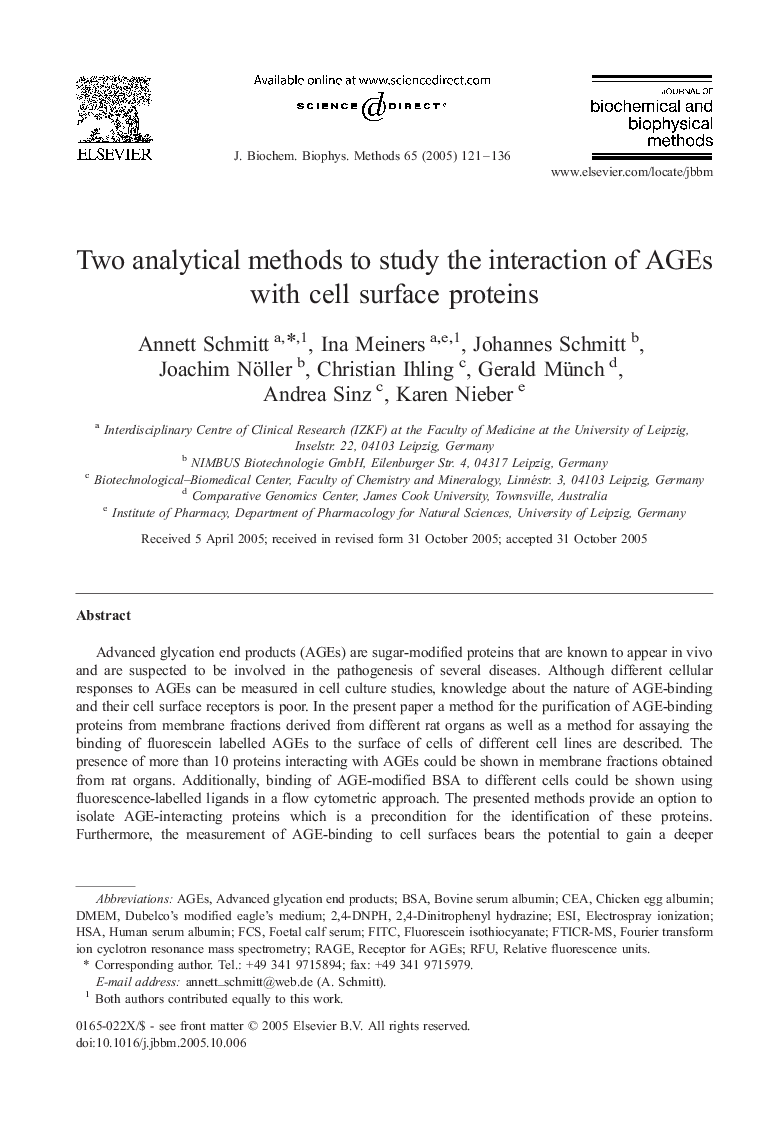| Article ID | Journal | Published Year | Pages | File Type |
|---|---|---|---|---|
| 9891232 | Journal of Biochemical and Biophysical Methods | 2005 | 16 Pages |
Abstract
Advanced glycation end products (AGEs) are sugar-modified proteins that are known to appear in vivo and are suspected to be involved in the pathogenesis of several diseases. Although different cellular responses to AGEs can be measured in cell culture studies, knowledge about the nature of AGE-binding and their cell surface receptors is poor. In the present paper a method for the purification of AGE-binding proteins from membrane fractions derived from different rat organs as well as a method for assaying the binding of fluorescein labelled AGEs to the surface of cells of different cell lines are described. The presence of more than 10 proteins interacting with AGEs could be shown in membrane fractions obtained from rat organs. Additionally, binding of AGE-modified BSA to different cells could be shown using fluorescence-labelled ligands in a flow cytometric approach. The presented methods provide an option to isolate AGE-interacting proteins which is a precondition for the identification of these proteins. Furthermore, the measurement of AGE-binding to cell surfaces bears the potential to gain a deeper understanding about the nature of AGE-binding to cell surface proteins and might be applied as a preliminary test before performing cell culture studies about AGE effects.
Keywords
FCSchicken egg albuminFTICR-MS2,4-DNPHRFUreceptor for AGEsRAGEAGEsHSAFITCESIDMEM2,4-dinitrophenyl hydrazineBSACeAhuman serum albuminbovine serum albuminfoetal calf serumFourier transform ion cyclotron resonance mass spectrometryfluorescein isothiocyanateFlow cytometryAdvanced glycation end productsRelative Fluorescence Unitselectrospray ionization
Related Topics
Life Sciences
Biochemistry, Genetics and Molecular Biology
Biochemistry
Authors
Annett Schmitt, Ina Meiners, Johannes Schmitt, Joachim Nöller, Christian Ihling, Gerald Münch, Andrea Sinz, Karen Nieber,
